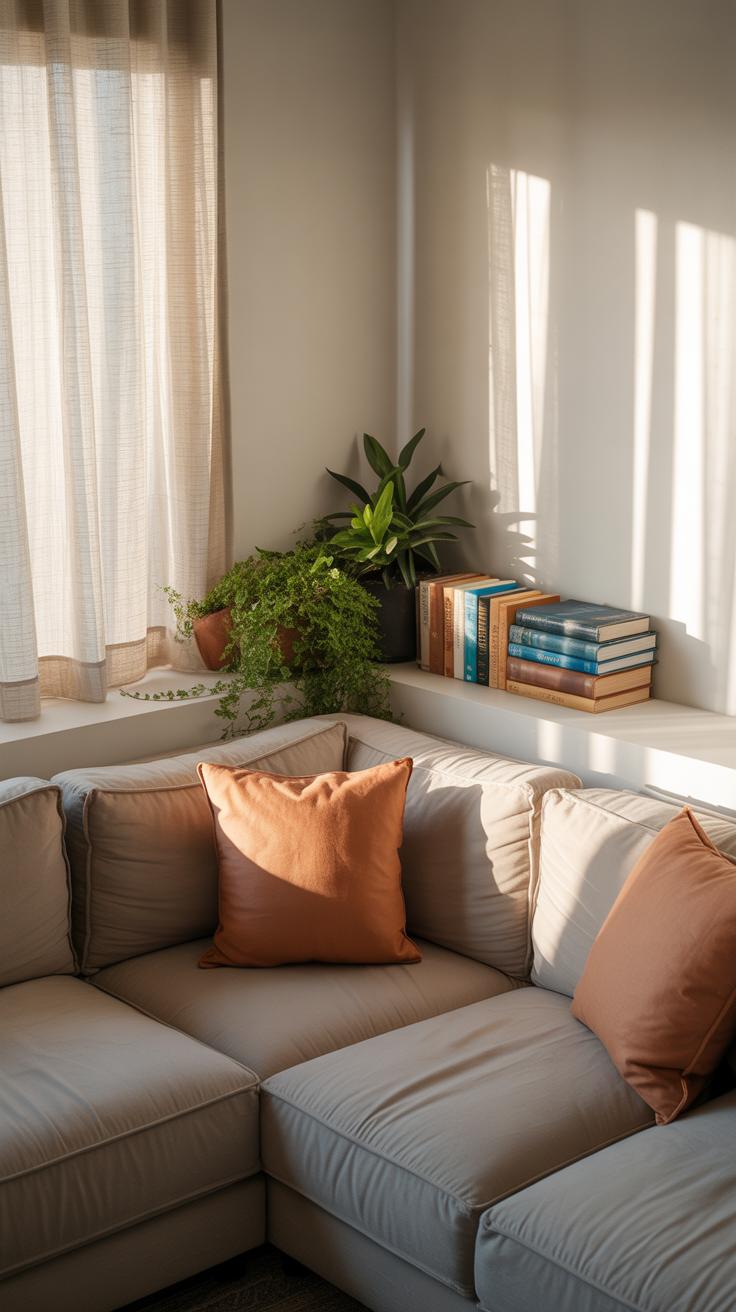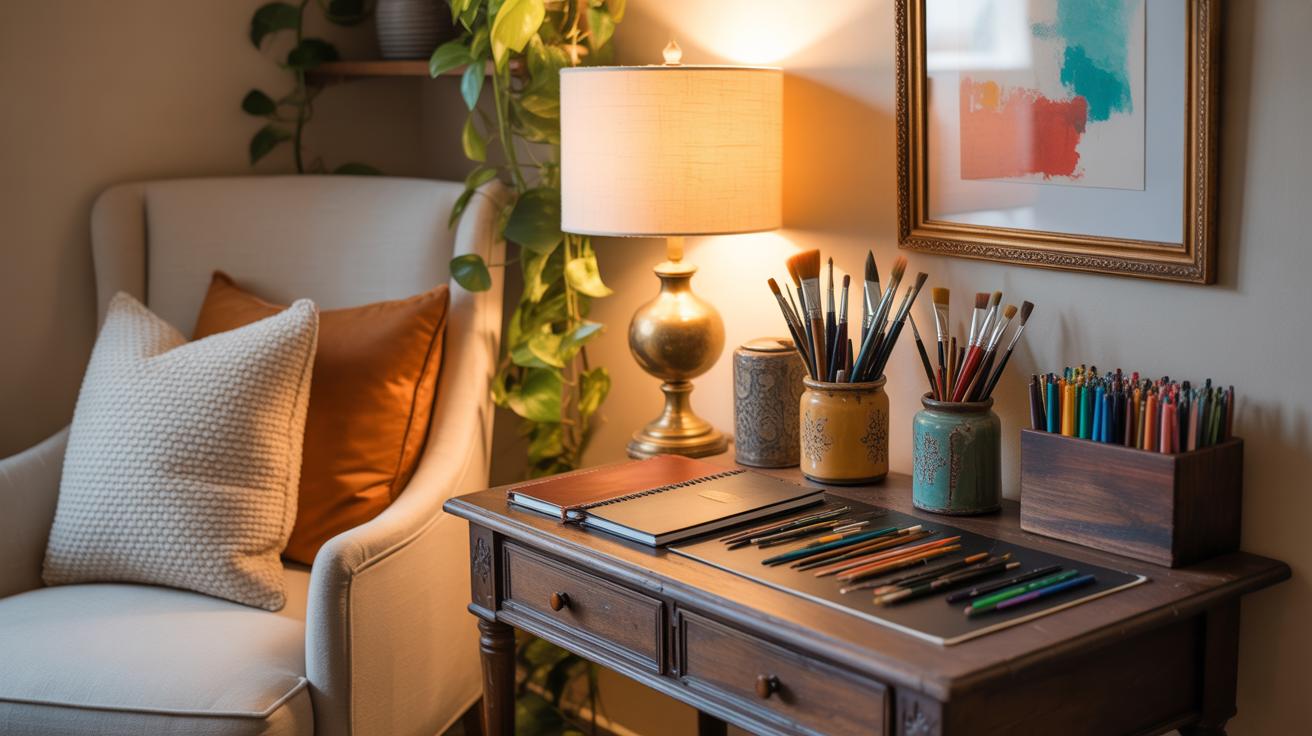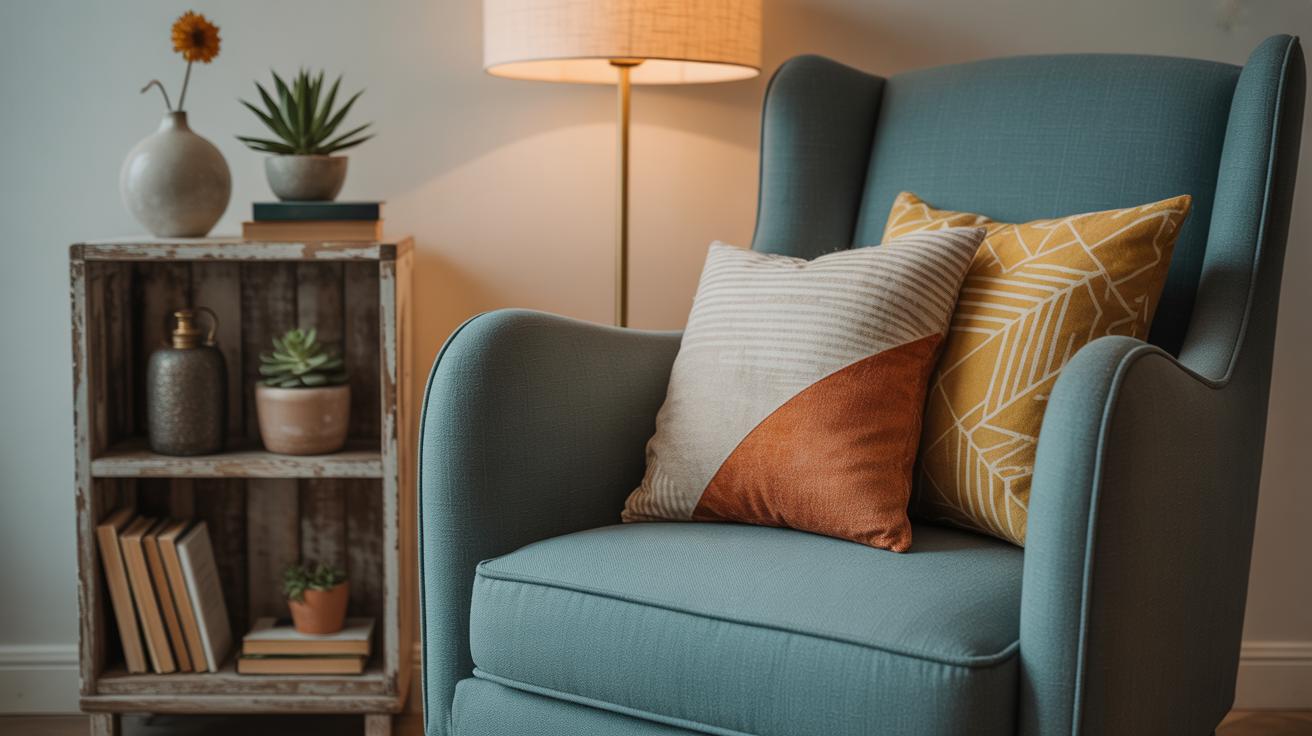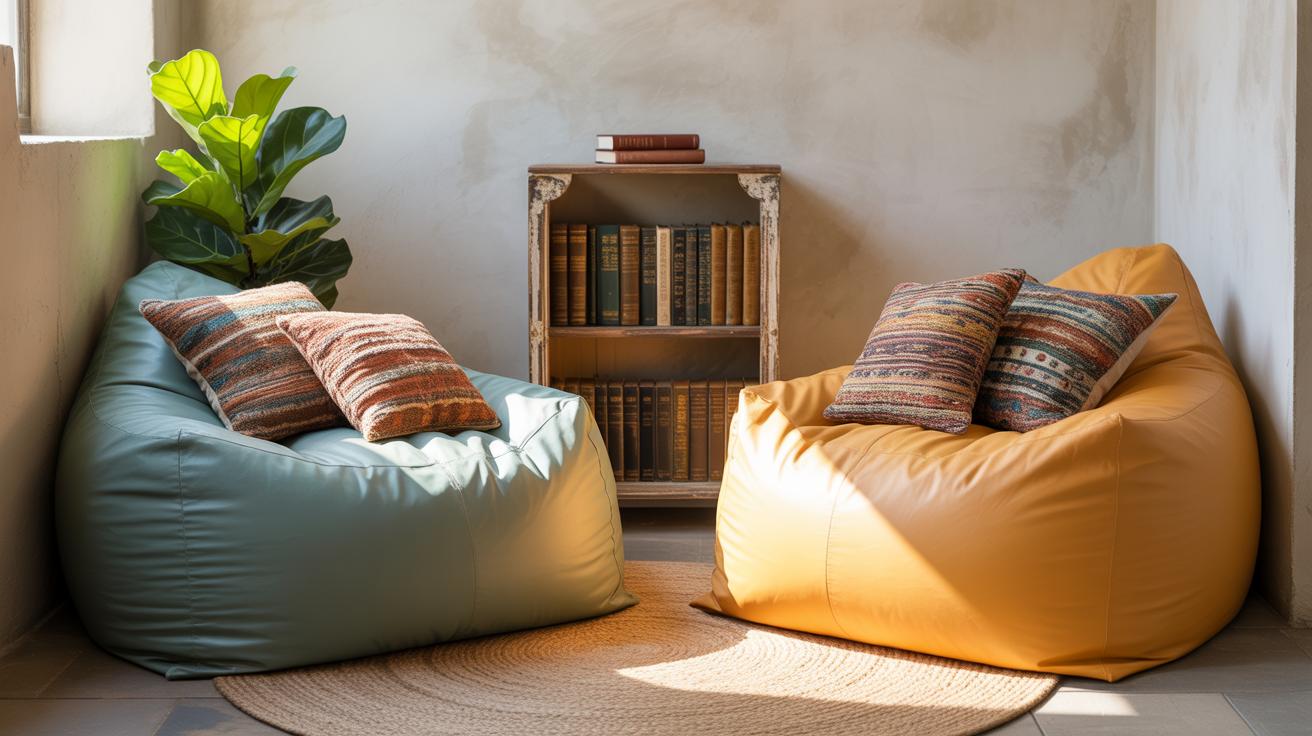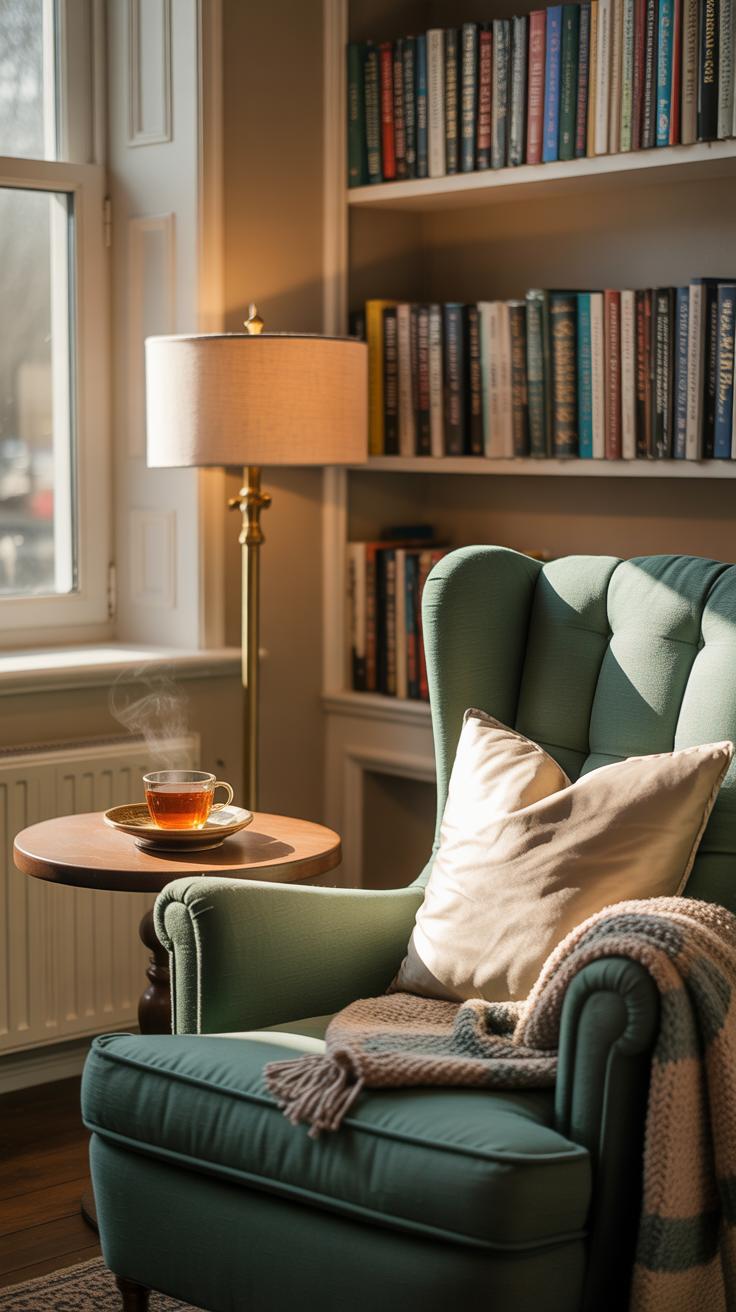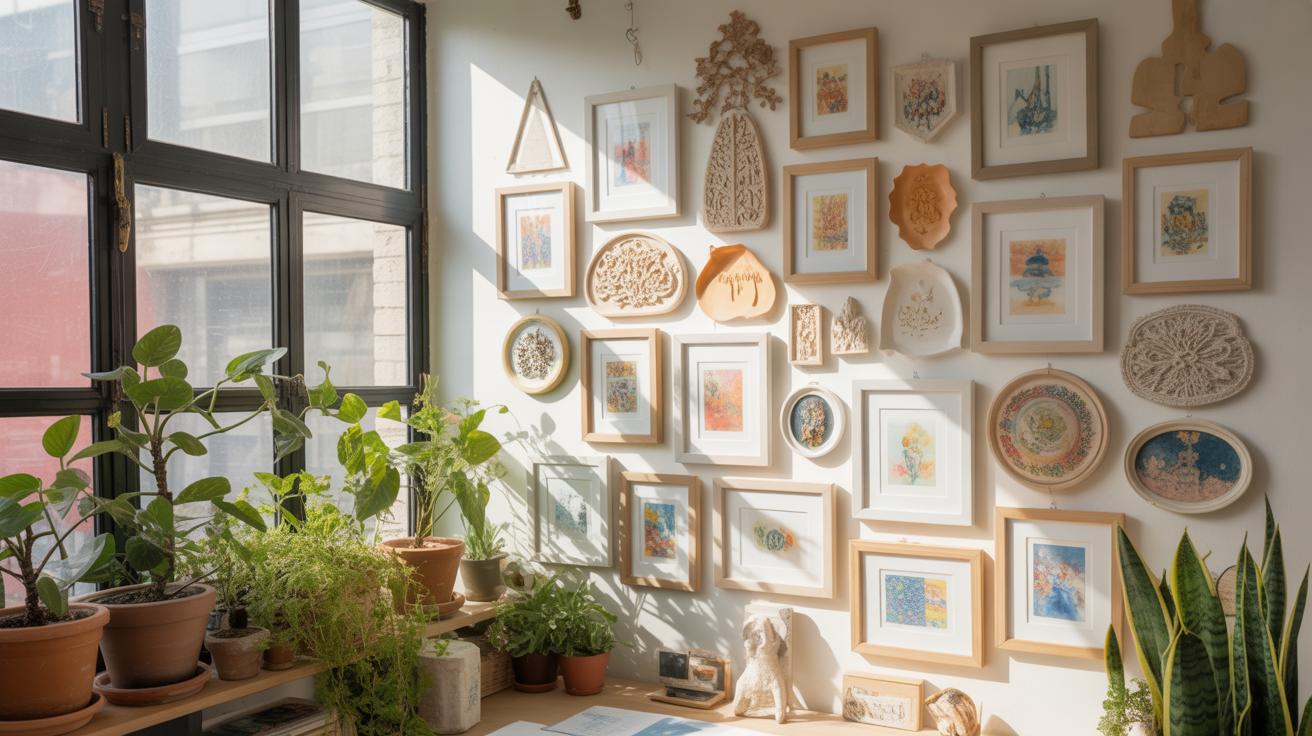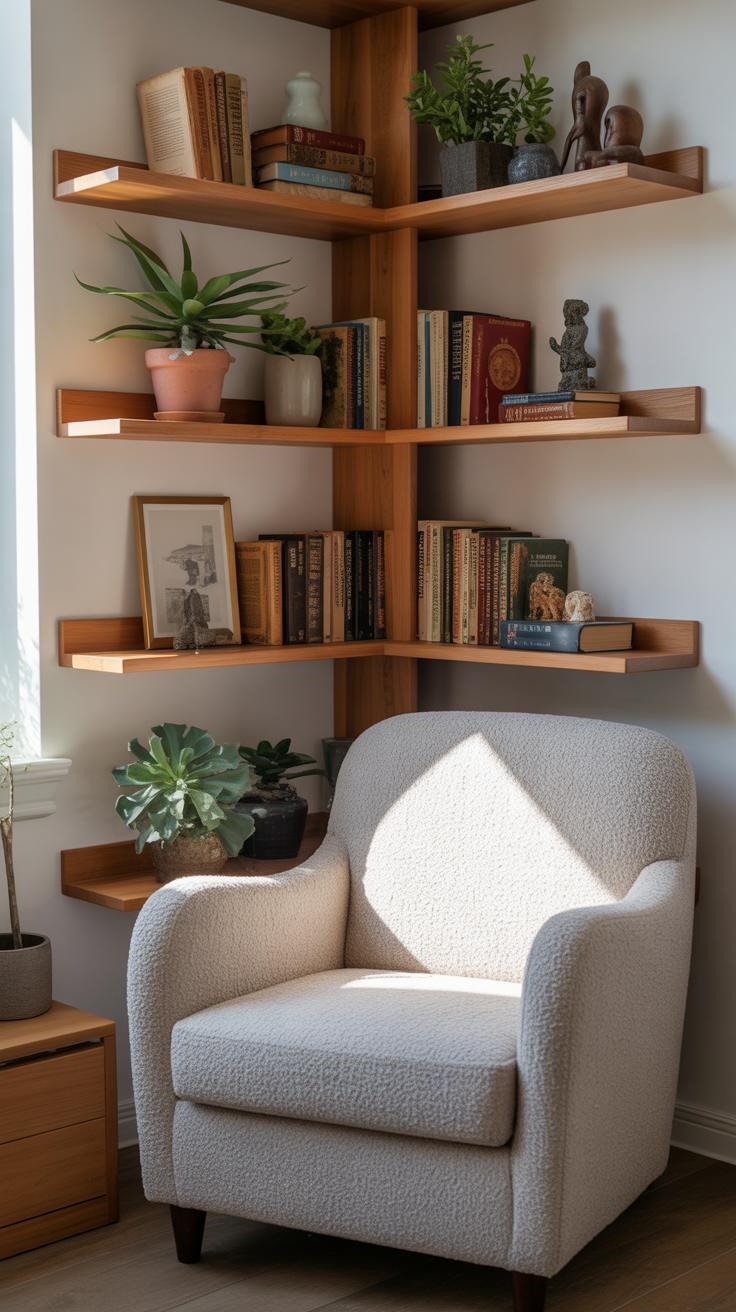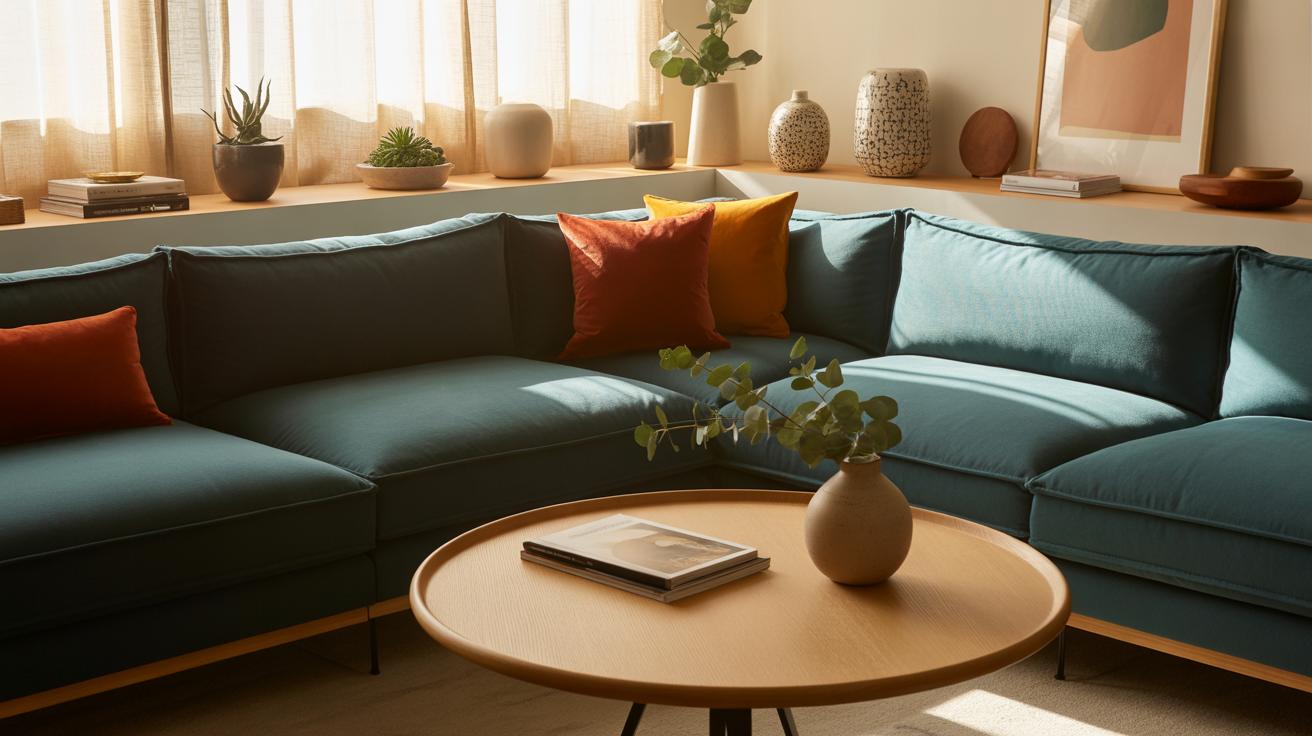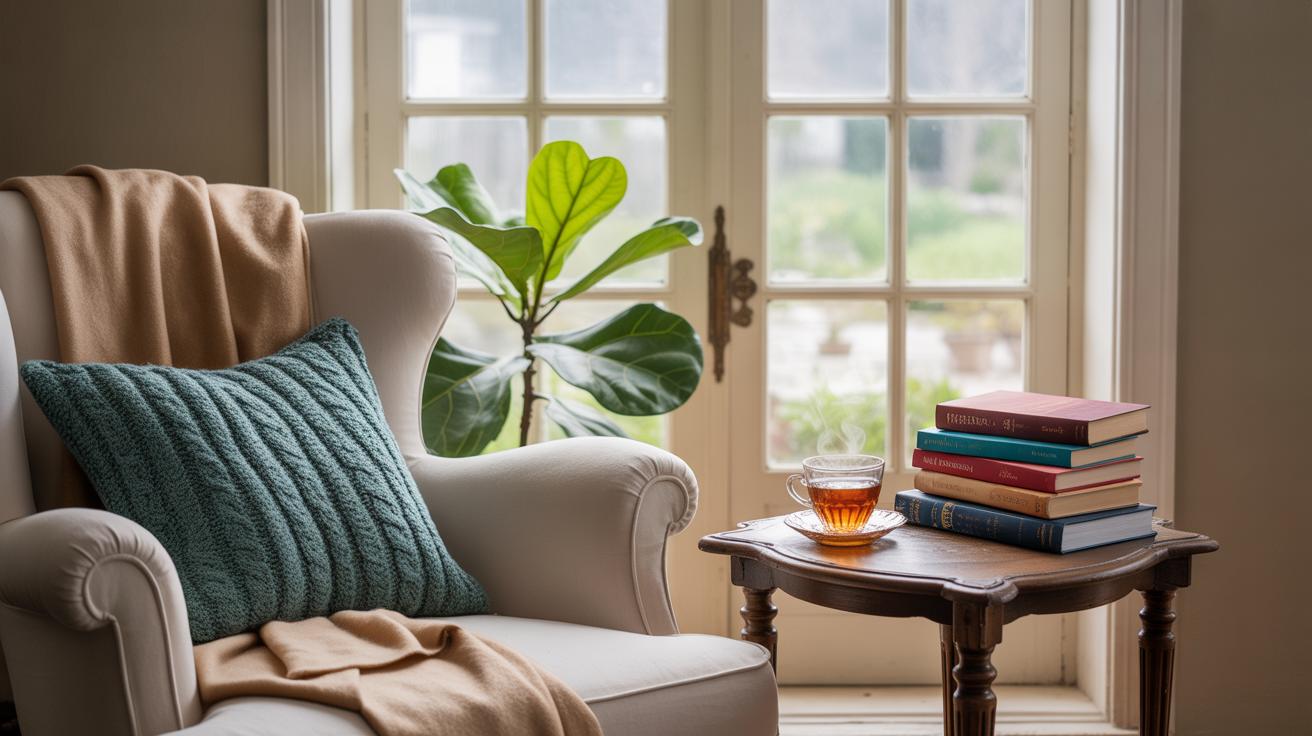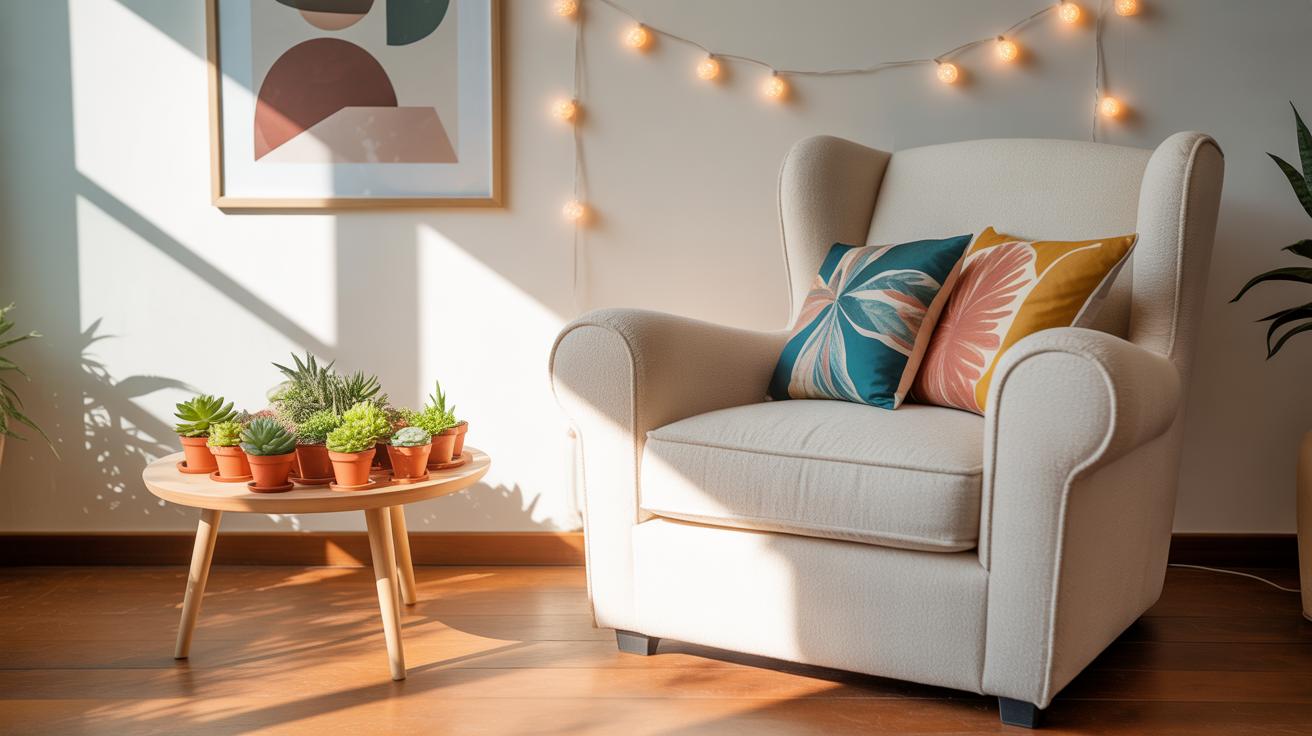Introduction
Creating a stylish and comfortable living room corner doesn’t have to be costly. Affordable corner decor ideas can transform any unused nook into an inviting space within your living room. This guide shares practical ideas for decorating your living room corners on a budget while making the most out of the available space.
From selecting the right furniture to choosing decorative accents and lighting, you will learn how to craft an aesthetically pleasing and functional corner. Whether you want a cozy reading nook, a small workspace, or a conversation area, these ideas will help you enhance your living room corners affordably and efficiently.
Selecting corner furniture that fits your space
Picking the right furniture for your living room corner can be a bit tricky. You want pieces that don’t just fill space but actually work with the room’s flow. Corner sofas come in all shapes—sectionals, modular sets, even standalone corner chairs. Sectionals, for example, are great for larger rooms. They wrap around the corner nicely and provide ample seating. But if your space is more modest, modular seating might be a smarter choice. You can move and rearrange parts as needed, which adds flexibility.
Corner chairs, on the other hand, offer a cozy, defined spot without overwhelming the area. Sometimes, adding a single stylish chair can make the corner pop without making it crowded.
Before buying anything, measuring the corner precisely is crucial. Use a tape measure and jot down the length of each wall forming the corner. Don’t forget to note any obstructions like radiators or sockets. Measure ceiling height too, especially if you plan to include tall furniture. It helps avoid pieces that look awkward or leave unusable gaps.
Try sketching the corner’s dimensions on paper. Then, envision how the furniture will fit — imagine walking around it, and think about legroom. Does it feel cramped or spacious? Getting this right keeps the corner stylish and comfortable without seeming cluttered or empty, which can happen when pieces don’t quite suit the space.
Using color and texture to enhance corners
Applying color and texture in living room corners can completely change how they feel. You might try painting the corner walls a different shade from the rest of the room to add depth. Even a slightly darker or muted tone can make the corner pop without overwhelming the space. On the other hand, textured wallpaper—something with a subtle pattern or a natural material look—can grab attention and add interest, making the corner less of an afterthought.
Think about how these colors relate to your furniture and decor. If your sofa is a neutral color, a richer hue on the corner walls might balance things out. And don’t forget the fabrics: cushions and throws with various textures can bring this idea further into the space. A woven cushion placed just right or a rug with a distinct but soft texture can warm up the corner, making it an inviting spot, even if it’s small.
Choosing colors to brighten corners is trickier than it seems. Light, cool colors often help corners feel larger, but sometimes that can make the space too cold or sterile. Warmer hues can make the corner feel cozy, but risk shrinking it visually. Experiment by testing paint samples before committing. Combine these colors with your furniture—maybe a wooden side table or metal accents—to keep the space grounded. It’s easy to get distracted by bold choices, but subtlety often works better in corners because you want them to complement, not compete.
Fabrics and rugs amplify the corner’s character. A thick area rug with a slightly raised pattern can anchor the space without demanding too much attention. Pairing cozy throws and cushions in natural materials—think cotton, wool, or linen—can change the feel from cold to inviting. Sometimes, just layering a soft throw over a chair or sofa tucked into the corner can subtly draw people in. I’ve noticed that mixing textures, like a nubby cushion with a smooth throw, keeps it from feeling flat or one-dimensional.
Lighting solutions for living room corners
Corners can be tricky spots to light, especially when you want to balance function and mood. Floor lamps are popular because they add height and don’t clutter surfaces. But they can sometimes overwhelm small corners or compete with other furniture. Wall sconces save floor space and give a softer glow, which can feel quite cozy, but installation might require some effort if wiring isn’t already there. Then there are string lights, which feel casual and inviting. They work well if you want to soften a corner without harsh lighting, though they won’t replace task lighting.
Each option changes the vibe in noticeable ways—floor lamps for an upright, readable space, sconces for subtle ambiance, and string lights for relaxed charm. If you’ve ever fiddled with corner lights, you might agree the kind of lamp you pick nudges the whole corner’s personality.
Choosing the right lamp type for corners
Picking the right lamp depends a lot on what the corner’s doing. For example:
- Floor lamps: Great for corners that need bright, focused light like reading nooks. But be wary if the space is tight—too big, and they feel awkward.
- Wall sconces: They free up floor space but require wall mounts. Ideal if you want general mood lighting without bulky fixtures.
- Table lamps: Good on side tables in corners, if you have the surface. They add warmth but need proximity to power outlets.
- String lights: Stylish for a casual, mood-focused setting but not practical for task lighting.
Sometimes the corner’s size dictates your choice more than anything else. A small corner may choke on a big floor lamp, while a larger nook might seem empty without one.
Setting up layered lighting for ambiance
Mixing light sources transforms a corner’s feel. Pairing a floor lamp with wall sconces, for instance, can create depth—bright where you need it, soft elsewhere. Layering is about contrast and texture. Try this:
- Use a floor lamp as the main light in the corner.
- Add a wall sconce for accent lighting that brings warmth.
- Consider string lights or LED strips for subtle, indirect glow, especially around shelves or plants.
This approach lets you toggle the mood—bright for work or dim for relaxing. I once set up a corner with all three types and found the space changed completely depending on which lights I turned on. So layering isn’t just about light; it’s about reshaping how you use the corner throughout the day.
Creating a cozy reading nook affordably
Turning a simple corner into a reading nook doesn’t have to drain your wallet. You mainly need a comfy chair, maybe a small table for your cup of tea, and a place for your books. A well-chosen cushion or two can completely change how inviting the spot feels—soft textures help, especially as you settle in for longer reads.
For furniture, think simple: a modest armchair or a sturdy bean bag, paired with a side table just big enough for a lamp and your current book. A small bookshelf or even wall-mounted shelves nearby work well, providing easy access without cluttering the space. You don’t need to splurge on designer pieces—often secondhand finds or DIY solutions work just fine.
Lighting is key. A floor lamp with adjustable brightness or a clip-on lamp can offer practical and cozy illumination. Natural light is great but rarely enough, especially in the evenings. Soft, warm-toned bulbs usually make the nook feel more relaxing.
To personalize your corner, try adding a few plants to breathe some life into the area. Even a single leafy pot makes a difference. Wall art goes well here, too—something simple, maybe a favorite print or a framed quote. The goal is to soften the space, make it yours without overdoing it.
Corner storage ideas for small living rooms
Finding storage that fits snugly into living room corners can be tricky, especially when space is tight and budgets are tighter. You want something that doesn’t just occupy awkward space but actually works for you—both in looks and function. Think about simple corner shelves that don’t need heavy installation: those floating shelves can be a lifesaver. They hold books, small plants, maybe a few decorative items, without claiming your floor space. Cheap, easy, and surprisingly versatile.
If you want to go a bit further, small corner cabinets are worth considering. They often come with angled fronts that make the best use of the little real estate. Some come with doors to hide clutter, others open up for quick access. I once used a corner cabinet that doubled as a mini bar—it fit perfectly and didn’t scream “storage.”
Vertical space in corners tends to get ignored, but it shouldn’t. Tall shelving units or stacked cube organizers can grab height that usually goes wasted. Just be mindful not to crowd the room or block natural light, which can make your small space feel smaller. Vertical solutions may require you to rethink what you store—lighter items on top, heavier below. It’s a balancing act, really.
Have you tried hanging organizers or pegboards even in a living room corner? It works if you’re a bit creative and don’t mind experimenting. You might be surprised how much you can fit without sacrificing style or feeling cramped. Sometimes a little risk pays off in small spaces.
Decorating corners with plants and art
Living room corners often get overlooked, but a little attention can turn them into eye-catching spots. Plants and art are a great way to add character without spending much. You might want to pick plants that thrive in low or indirect light, depending on your corner’s setup. Snake plants, ZZ plants, and pothos are great if sunlight is limited—they usually need little care and still look fresh after a few missed watering sessions. In brighter corners, consider fiddle leaf figs or rubber plants for a bit more impact, though they need a little more care.
When it comes to art, the tricky part is that corners can feel small or awkward. You could try leaning a mid-sized framed print or canvas against the wall rather than hanging it. Or get some narrow, vertical pieces that suit the angle of the corner. If you prefer something on the wall, smaller collections of framed photos or prints arranged to follow the corner’s shape can work nicely—almost like a mini gallery. Think about the color scheme, too; softer tones help the corner blend in while brighter strokes add a pop without overwhelming the space.
Combining plants and art creates layers in a corner that look intentional, not random. I’ve noticed that mixing textures—like a rough pottery planter with a smooth print—brings a subtle richness. If you’re unsure, maybe start with one element first, then add the other as you see what fits best. After all, corners are personal spaces, and sometimes, living with the setup for a bit helps you figure out what’s really missing.
Setting up a small workspace in your corner
Turning a living room corner into a workspace might seem tricky, but with a bit of thought, it can be quite doable—even without spending much. The key is to find furniture that fits neatly into the space without overwhelming it. For example, a corner desk with a triangular surface or an L-shaped desk can nestle right into the angle, making smart use of what might otherwise be wasted space. Sometimes, a simple floating wall desk works well if you don’t need a lot of storage.
When it comes to choosing a desk, think about what you really need in terms of surface area and storage. Compact desks with built-in shelves or drawers can keep essential items within reach but aren’t bulky. I once made do with a small desk that had a single drawer and a shelf underneath, and it worked surprisingly well for my laptop, a small lamp, and some notebooks.
Dealing with clutter in these corners can be a challenge, especially cables and small stationery items. Using inexpensive cable clips or ties can keep cords in check without much fuss. Repurposed jars, small boxes, or drawer organizers can corral pens, paperclips, and sticky notes. Sometimes, it’s just about making sure everything has its place rather than buying the latest fancy organizer.
Have you considered how much space you actually need for your work habits? Sometimes, less is more, but other times, thinking a little bigger might save frustration later. Balancing functionality and saving space might not have a perfect answer—that’s part of what makes setting up these corners a bit of a personal experiment.
Mistakes to avoid with corner living room decor
Overcrowding corners with big furniture
It’s tempting to fill a corner with a large statement piece, like an oversized armchair or a bulky cabinet, thinking it will anchor the space. But often, these big items end up making corners feel cramped and cluttered instead. When the furniture is too large, it squeezes the flow of the room, leaving little breathing room for movement or other elements. You might think a big piece adds coziness, but really it can just make the space feel closed off and heavy.
Try to think about scale—lighter, smaller pieces can open corners up rather than block them. A low-profile chair or a narrow shelf does a lot more good without overwhelming the space. Think of corners as potential breathing spaces, not just spots to fill at any cost.
Ignoring balance and harmony in decor
Mixing too many different styles or colors in one corner can quickly disrupt the visual calm of your living room. It’s easy to get carried away by adding pieces you like individually, but together they might clash or feel disjointed. I’ve seen corners where a modern lamp meets a rustic shelf and a bright patterned pillow all at once—the result wasn’t exactly peaceful.
The key, I guess, is to look for some continuity—whether through color tones, materials, or design style—so the corner doesn’t stick out awkwardly. But balance isn’t about everything matching exactly; sometimes a bit of contrast works if it’s thoughtful. So, ask yourself, does this piece really fit with what’s already there? If not, it might be better off somewhere else—or not at all.
Conclusions
Designing your living room corner can significantly improve the comfort and style of your home. By choosing the right furniture and accessories, you can create a space that feels both functional and welcoming without spending a fortune. Small changes like adding lighting, soft cushions, or a unique piece of wall art can make a big impact in a corner area.
Exploring affordable options and focusing on practical solutions lets you turn your living room corners into highlights of your home. With attention to detail and careful planning, your corner space will add charm and usability, making your living room more enjoyable and stylish every day.


